Paid media seems relatively straight forward: in its simplest form, you put money in and then track the return on investment that you get from it.
In Gartner’s latest CMO Spend Survey which analyses where CMOs are planning to put their cash for 2023, the top three channels that marketers are investing their budgets in are all Paid, including social, search, and display advertising taking the top spots. SEO was the top organic channel where marketers were spending, followed by email marketing and content marketing.
So, we should all just run Paid campaigns then?
Well, no. Running Paid without organic is like when Fyre Festival claimed they had a sold out event…
Essentially, you can bring people to a location but if there’s nothing there for people to interact with, not only is it a waste of people’s time but you’re going to negatively impact their perception of your brand.
Plus, as we gear up to changes in privacy laws and the growing reliance of the need for first-party data (or data that you readily hand over – such as when you sign up for 10% codes off using 3 different email addresses), there’s a growing need for a value exchange. If they’re giving you their data, what are you giving them in return?
Content should work smarter, not harder
When working with hero content, paid activity is just a small portion of the possible activity that could be done. Think about all the resources and platforms you have available to you, and how that piece of content you’re using for your paid campaign could show up through them, too.
Usually, it requires only a little extra effort – the important bit is that both sets of marketing activity work together. Imagine an eBook as your piece of hero content that you’re running Paid activity behind; when it comes to using organic media to support this, you could create social assets that perhaps share quotes or eBook stats, run some PR if there’s any exclusive stats in there, take excerpts of the hero content into slightly shorter form blogs, then including this in your email marketing campaigns. This joined up activity might sound obvious but so many brands don’t do it and it goes such a long way to maximise reach and engagement, while all pointing back to that original hero content piece used in your paid campaign.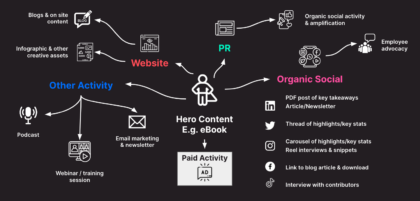
So first things first, let’s all get on the same page: what are the benefits of each?
Benefits of organic content
- Establish a brand: providing informative and engaging content about topics related to the company or industry.
- Build relationships, community and trust: potential or existing customers, who may view organic content as authentic because it’s typically relevant and helpful to them.
- Marketers may create organic content to educate potential customers and establish a company’s credibility.
- Build long-term relationships with customers who view the company as reputable.
- Gain valuable insights and feedback from your audience.
- Long term – e.g. improve rankings, drive traffic to your website, and build followers on social channels.
Benefits of paid content
- Reach a large audience quickly.
- Use specific targeting or reach an entirely new targeted demographic.
- This type of marketing content aims to increase a company’s return on investment in a short time frame by targeting specific audiences. Marketers may use paid content to attract new customers and help a company meet its sales goals.
- Optimising your content for specific business goals e.g. conversions.
What are the benefits of integrating both together?
Organic needs to be strong for Paid to succeed – it’s the foundation of a brand’s digital presence and you need to get it right before working on any paid activity.
Look at your best performing organic content when it comes to creating a paid ad campaign – this way, you can be more direct with your spending, whilst being confident it will do well.
Repurposing your well-performing organic content for paid amplification is a great way to get more bang for one’s buck. It allows you to:
- Build a consistent story across paid and organic channels.
- Create campaigns and content plans in cohorts.
- Make your audience aware: paid is about getting an audience’s attention, and once you have it, it’s your organic content that will keep them coming back for more.
- Look and feel credible: creating campaigns and content plans in cohorts will help you come across this way by giving an overall message to your end user.
Google’s ‘Messy Middle’ funnel
In 2020, Google released their consumer-led insight into what they called ‘The Messy Middle’; this piece argued that modern consumers no longer follow a linear purchase journey. Instead, they’ll have a trigger point (say for example, they want to book a holiday) and then loop round exploring their options and expand their knowledge either sequentially or simultaneously – they evaluate the options and narrow down their choices (so, in the case of a holiday, this could be taking inspiration and information about locations, prices, reviews and flight details all to find where they want to go).
For certain categories, only a brief time might be required for moving between these modes, while habitual and impulse purchases may bypass the loop altogether. But other purchases – typically more complex or expensive ones – encourage or even oblige us to engage in lengthy exploration, generating a healthy number of options to evaluate.
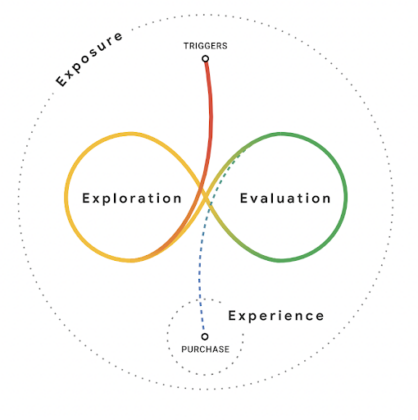
For marketers, the challenge is simple: how do you ensure that when the consumer stops flip-flopping between states, it’s your product or service that wins? In other words, how do you persuade someone to stop shopping around and actually buy what you’re selling?
The answer: provide them with everything they need to feel comfortable making a decision. If paid activity helps start that trigger point, it’s organic media that can help pull people out of an otherwise seemingly endless loop cycle.
A lack of organic content can stop the customer journey in its tracks
Picture this: you’ve seen a paid campaign for a men’s fashion brand on Instagram and you really like the top you see, so, you take the next rational step, and head to the company’s Instagram page. You’re met with just six pictures on their account and only a couple hundred followers – immediately, alarm bells start to ring. You decide to do a Google Search – and it’s not going well.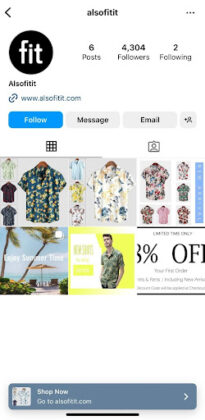 The good news is that they’ve got an Amazon shop and they’ve got a relatively good TrustPilot rating, so clearly they’ve invested in those two areas.
The good news is that they’ve got an Amazon shop and they’ve got a relatively good TrustPilot rating, so clearly they’ve invested in those two areas. 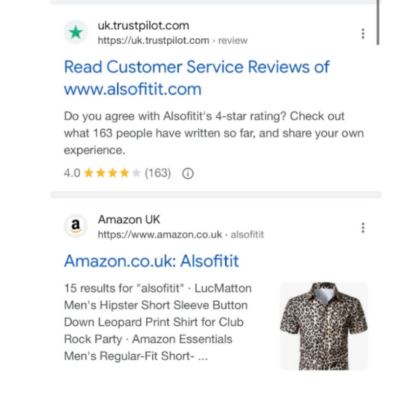 But the website copy is questionable and there’s no enticing value exchange for the newsletter.
But the website copy is questionable and there’s no enticing value exchange for the newsletter.
In this case, a targeted paid campaign drew you in, but their lack of organic content to support it made you reluctant to continue your customer journey.
So, who’s doing it well?
You’re back on Instagram again and you see this HubSpot ad pop up. You like the look of the graphics, so you click on the ‘Learn more’ button to have a look.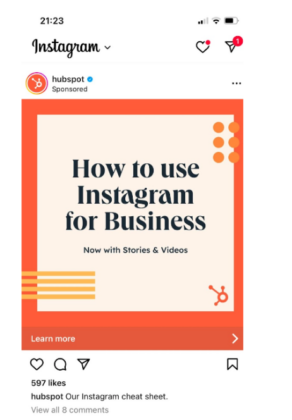 However, it’s 9.30pm on a Tuesday night and you’ve got your favourite TV show on in the background so whilst the landing page looks good, you don’t want to download an eBook right now, and you click onto their Instagram account instead.
However, it’s 9.30pm on a Tuesday night and you’ve got your favourite TV show on in the background so whilst the landing page looks good, you don’t want to download an eBook right now, and you click onto their Instagram account instead.
To help show consistency, they’ve pinned matching activity to the top of their page; you immediately know you’re in the right place and there’s loads of video content too that you can have a little look at.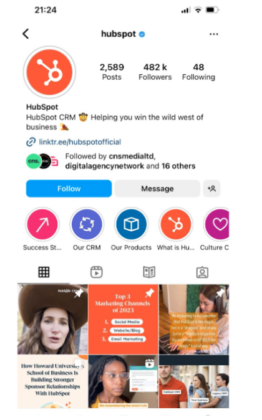 Back at work the next day, you remember the eBook, go onto HubSpot’s homepage and look at their resources which are clearly signposted.
Back at work the next day, you remember the eBook, go onto HubSpot’s homepage and look at their resources which are clearly signposted.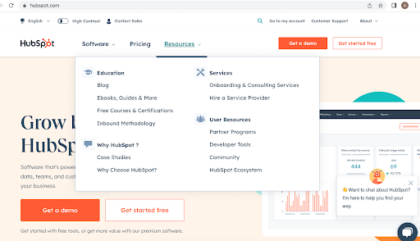 There’s tonnes of similar resources, all in consistent branding (406 to be precise!)
There’s tonnes of similar resources, all in consistent branding (406 to be precise!)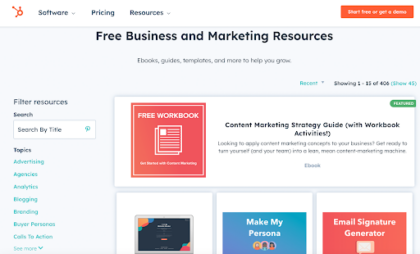 And it doesn’t end there – they’ve also got loads of supporting blog content, and related content across their other social channels, including LinkedIn.
And it doesn’t end there – they’ve also got loads of supporting blog content, and related content across their other social channels, including LinkedIn.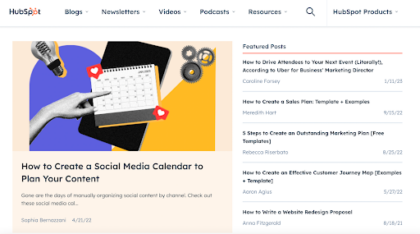
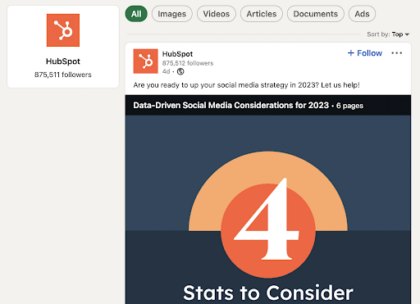 Whilst there might be some differences in a B2B versus B2C exploration – and potentially the budgets and number of decision makers involved – we’re still looking for the same trust signals and a consistent and truly cohesive brand experience is vital for that to take place.
Whilst there might be some differences in a B2B versus B2C exploration – and potentially the budgets and number of decision makers involved – we’re still looking for the same trust signals and a consistent and truly cohesive brand experience is vital for that to take place.
Organic content can boost paid leads
Behind all good paid activity and campaigns should be a robust suite of organic content and engaging activity.
Have a look at all of the different types of organic activity listed here on this flowchart: 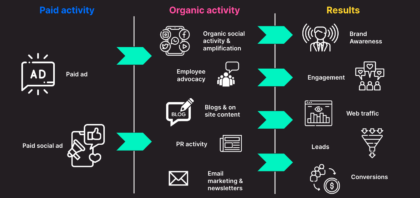
Think about the customer journey and how someone might pinball around that messy middle. What organic activity are you running to support the leads your paid activity is bringing in and how are you keeping them on the right track to deliver those all-important results?
Organic content has the power to boost paid leads. Placing emphasis solely on paid – like in the men’s fashion brand example above – will only leave you with less budget and very few converting customers.
The key takeaways
- Don’t put all your eggs into one (Paid) basket.
- Paid and Organic have to work together and, if you have one without the other, you’re not going to see the best results.
- Consider your current Organic activity: where are the gaps?
Want a hand setting up an organic content strategy or finding the gaps in yours? Get in touch with our team.

